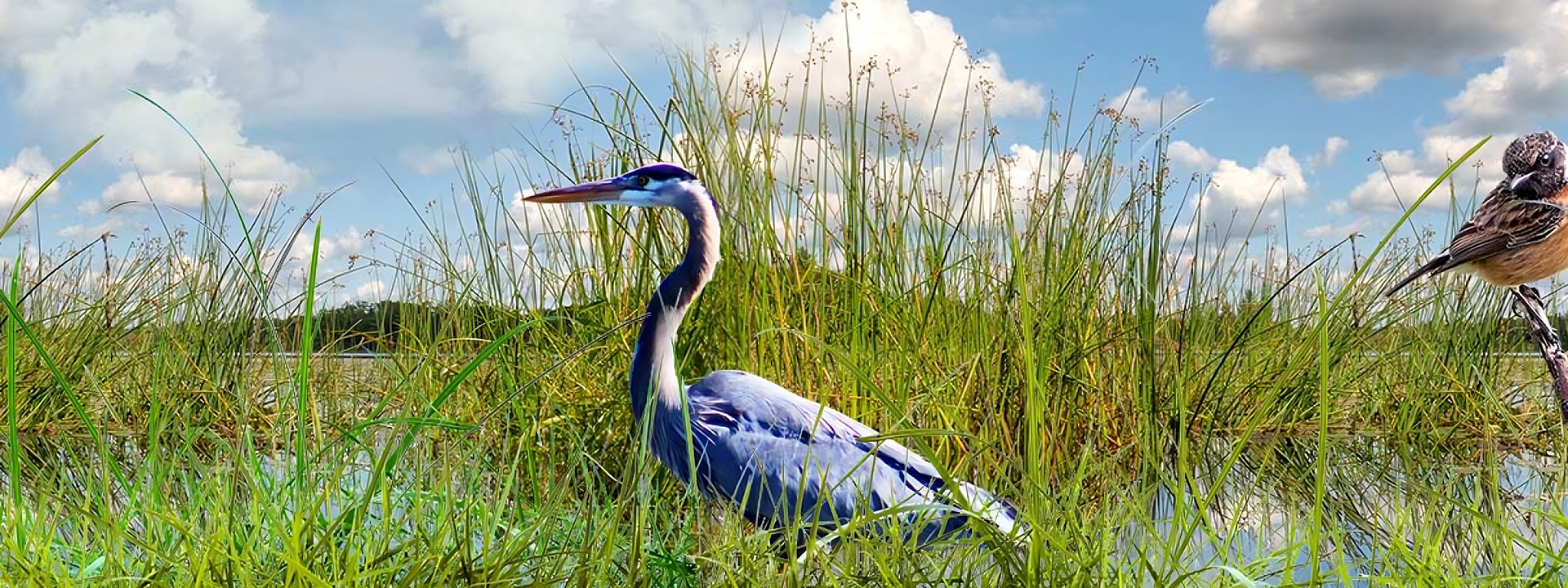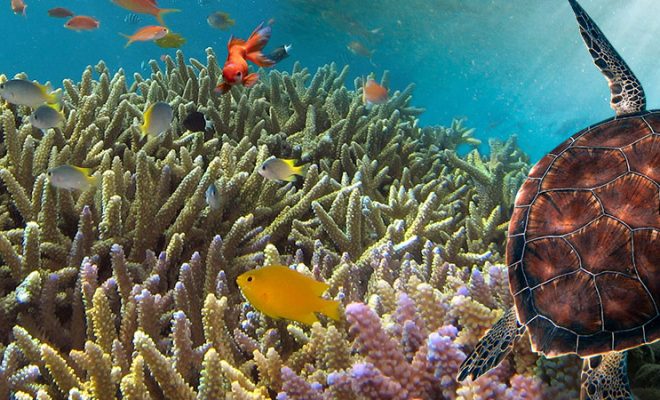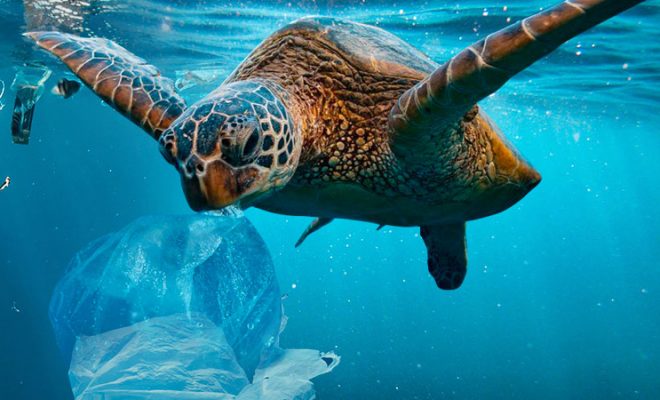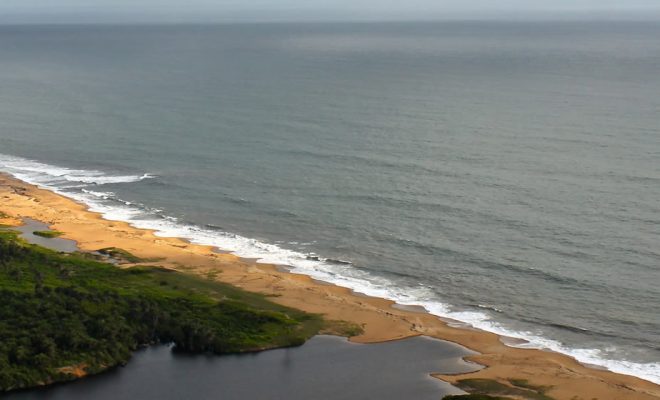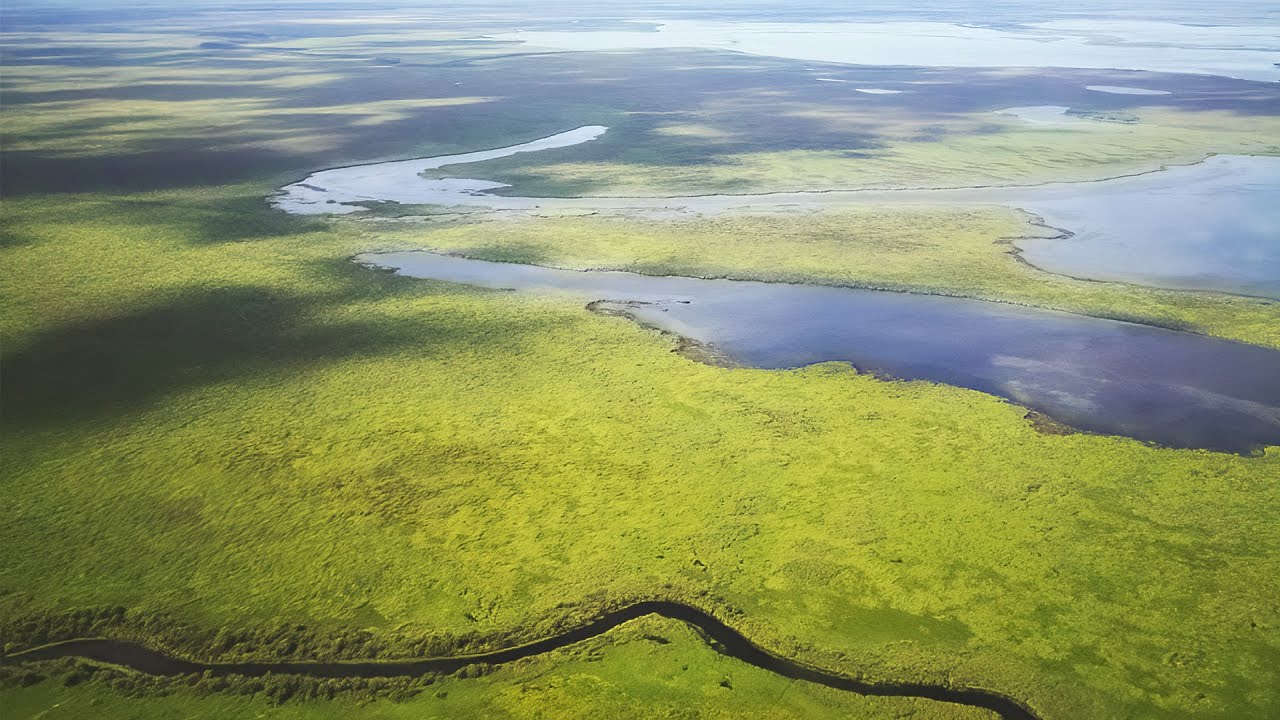
“Wetland” comes from wetness or humidity, a term that does not necessarily refer to a body of water that floods a particular piece of land. It means something more subtle, referring to the link between water and land. This link is not always visible but is critical to balance various terrestrial ecosystems.
Historically, wetlands have been crucial ecosystems in the development of human civilizations. Their tradition of use dates back thousands of years to before the Neolithic when hunter-gatherers living around them obtained water and food from their diverse fauna and flora.
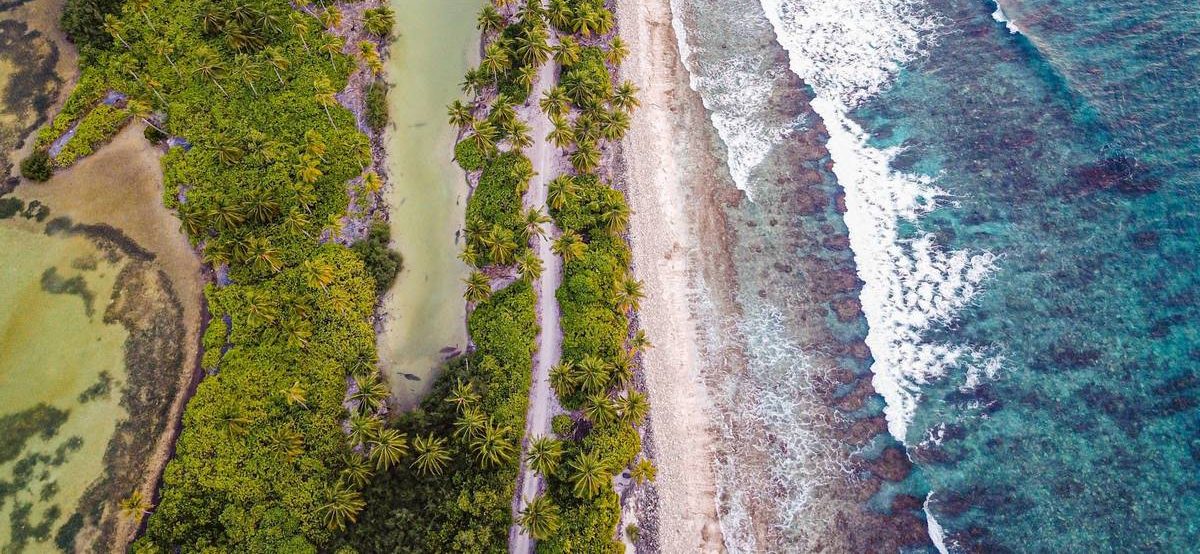
Wetlands represent the subtle link between land and water, which is why they suffer the consequences of climate change, overexploitation, and pollution. © Mohamed Sameeh-unsplash
A controversial relationship with humans
Perhaps because of their proximity to civilization, wetlands have been one of the ecosystems most vulnerable to human action. They have often been underestimated, and there are even many negative references in ancient and medieval literature. Sometimes, they were considered sources of disease or linked to evil spirits or ghosts.
The advent of the Renaissance brought the discovery of the multiple services provided by wetlands. However, in the 17th century, with the emergence of the telluric and miasmatic theories, wetlands were once again viewed with suspicion because they were considered generators or transmitters of diseases, especially the dreaded cholera. The telluric theory claimed that the soil and groundwater determined the propagation of cholera; the miasmatic theory asserted that the emanations (“miasmas”) of some foul-smelling wetlands were the cause of the lethal intestinal disease and all kinds of other epidemics.
In the second half of the 19th century, wetlands were relieved of their unhealthy curse with the advent of the microbial theory of disease and the birth of ecology. They came to be considered elements of high value for life on Earth.
Despite this, wetlands have only declined. Some studies indicate that by 1700 there were almost 90% more wetlands on Earth than there are today. Historical documents describe the destruction of wetlands for military strategy, urban planning, or simply because of the nuisance caused by their endemic fauna (mosquitoes are the most common).
With the advent of the “third industrial revolution,” this deterioration accelerated. According to a 2018 report by the Ramsar Convention (an intergovernmental treaty that establishes the basis on which to act for the conservation of wetlands), 35% of wetlands have been lost since 1970, at a rate of destruction three times higher than that of forest loss. Agricultural overexploitation, water and air pollution, and climate change are the causes.
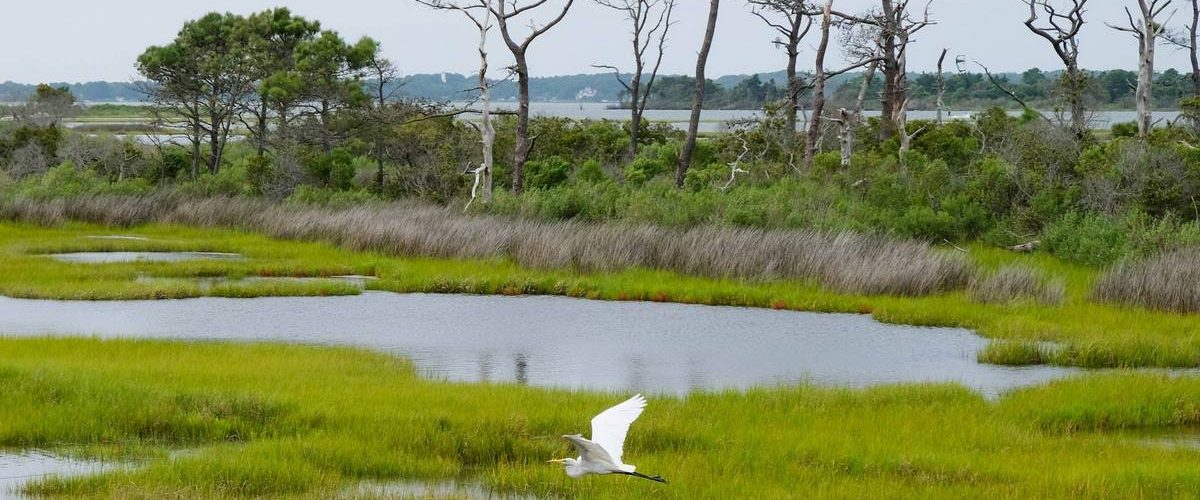
Wetlands form an ecosystem of their own with flora and fauna specifically adapted to their water cycle. © Sara Cottle-unsplash
40% of biodiversity depends on these ecosystems
To save them, we need to know them in depth. There are perennially flooded wetlands and others with alternating periods of flooding and drought. Thus, each wetland is an independent world, depending on geology and climate.
It is a common misconception that wetlands are transition zones between aquatic (seas, lakes, and rivers) and terrestrial systems. Although this is often the case, wetlands form an ecosystem of their own with flora and fauna specifically adapted to their water cycle. The biological category of wetland includes areas as diverse as bogs, stretches of rivers invaded by the sea, marshes, swamps, and peat bogs, as well as maritime coastal areas periodically flooded by tides, such as mangroves.
It is estimated that, at present, wetlands cover approximately 12,1 million km2. 40% of the world’s biodiversity lives or reproduces in this still enormous extension of territory, mainly because it forms the basis for the life of migratory species such as birds and is home to many species threatened with extinction. Some wetlands have a high proportion of endemic species unique in the world.
Wetlands are “blue carbon” and highly accurate indicators
According to several studies, these ecosystems store more carbon than any other. This aspect has yet to be taken into account in reducing greenhouse gases. However, for the past year, the IPCC has been considering the possibility of including wetlands in the definition of “blue carbon,” which so far only includes seagrasses, salt marshes, and intertidal systems.
Blue carbon is the carbon captured by the Earth’s aquatic ecosystems in their biomass or sediments. It is a factor that has been gaining importance among scientists in the fight against climate change. The oceans, for example, absorb about 90% of the planet’s excess heat and 25% of CO2 emissions. It is scientific evidence that, in wetlands, the carbon balance is very similar to these large ocean ecosystems, with a high accumulation of carbon in the sediment.
On the other hand, the Ramsar Convention highlights that wetlands contribute directly or indirectly to 75 SDG indicators, especially 6.6.1, which refers to the extent of water-related ecosystems. It is an indicator that is difficult to evaluate since, so far, the primary source of information on this subject is satellite, a field of research essential to assess the planet’s ecological balance but still relatively recent. Therefore, environmentalists and climatologists advocate the study and monitoring of wetlands as tools that greatly help assess progress on SDG 6. Their vulnerability is a “sensor” that guarantees reliability.
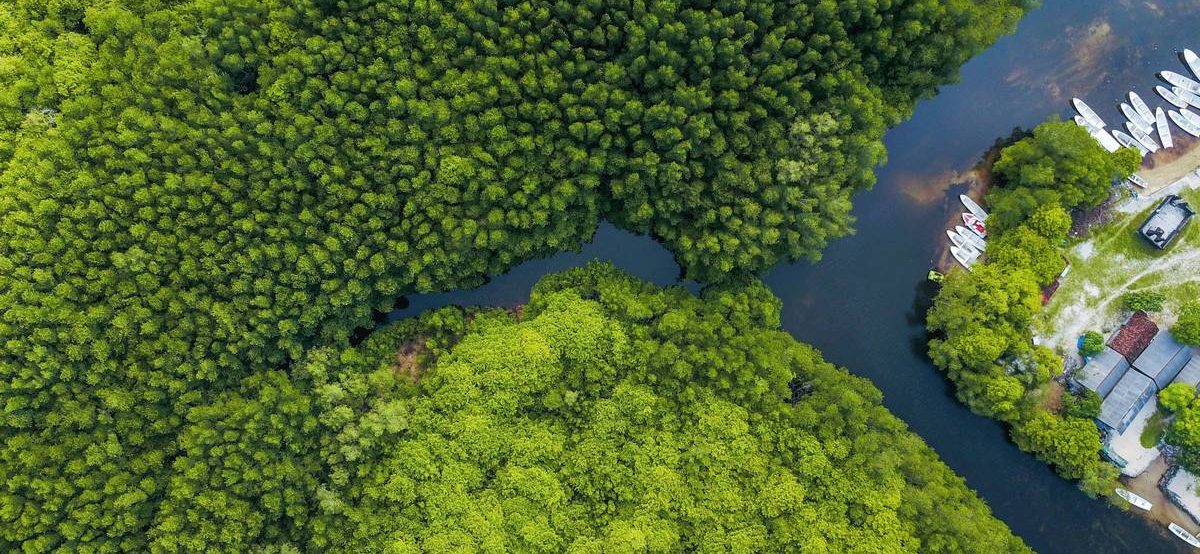
Environmental scientists often describe wetlands as “sponges” to publicize the benefits they provide us. © Joel Vodell-unsplash
Highly beneficial sponges to be saved
Environmental scientists often describe wetlands as “sponges” to publicize the benefits they provide us. They can buffer floods by absorbing water and allowing it to seep more slowly through the soil and vegetation.
The retained water can be reverted to human consumption and is highly effective in maintaining aquifers. In addition, by containing sediment and nutrients, many wetlands act as natural filters that can remove toxic substances from water bodies. We have generally become aware of these benefits when, following the disappearance or contamination of a wetland, we have been deprived of them.
In the fight against the climate crisis, it is essential to halt the disappearance of wetlands and restore those that still show reversible deterioration. The IPCC calls for special attention to be paid to Mediterranean wetlands without the necessary protection. Since 1970, the Mediterranean coasts have lost more than 50% of their natural wetlands, a high percentage that is certain to increase in the coming years.
Not only must wetlands be prevented from disappearing, but they must also be cared for through proper management. The first danger is the alteration of their hydrological dynamics, which is frequent due to urban impact or excessive water extraction from their surface or subsoil. The rise in sea level caused by climate change is another alteration of hydrological dynamics, as seawater enters the mouths of rivers and causes the death of trees and shrubs that depended on fresh water; as they decompose, the vegetation mass generates carbon dioxide, methane, and nitrous oxide. These are the so-called “ghost forests” that are increasingly common on the east coast of the United States.
The second great enemy of wetlands is eutrophication caused by agricultural nitrates and phosphates, which can also cause them to emit greenhouse gases instead of capturing them. Poor agricultural land management and fertilizer abuse have caused severe deterioration in wetlands adjacent to crops, which also often take water from the aquifers associated with them.
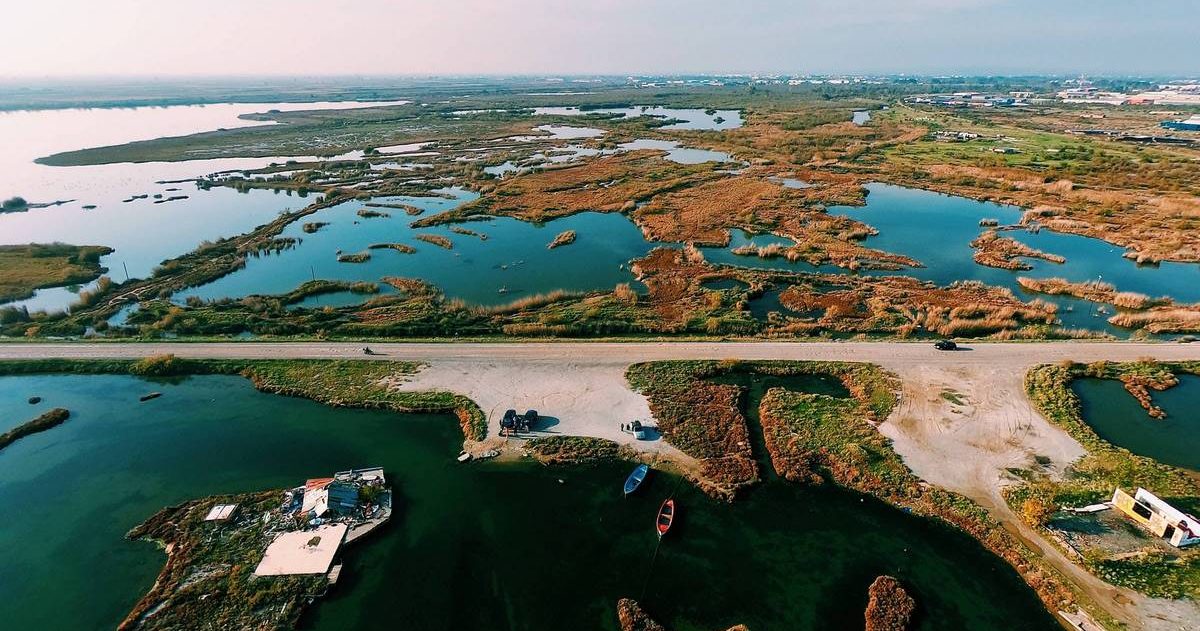
The biological category of wetland includes areas as diverse as bogs, stretches of rivers invaded by the sea, marshes, swamps, and peat bogs, and mangroves. © Stelios Triantafyllidis-unsplash
Including wetlands in the blue carbon category is necessary to favor their protection by obliging states to include them in national inventories of gas emissions, thus preventing them from being relegated to the background in international policies, as many scientists denounce.
The population that has historically settled in wetland areas has developed a rich and diverse cultural heritage, a good part of which has disappeared but still survives. Many citizen campaigns to protect wetlands include this social value to safeguard the best indicators of sustainability we have.


